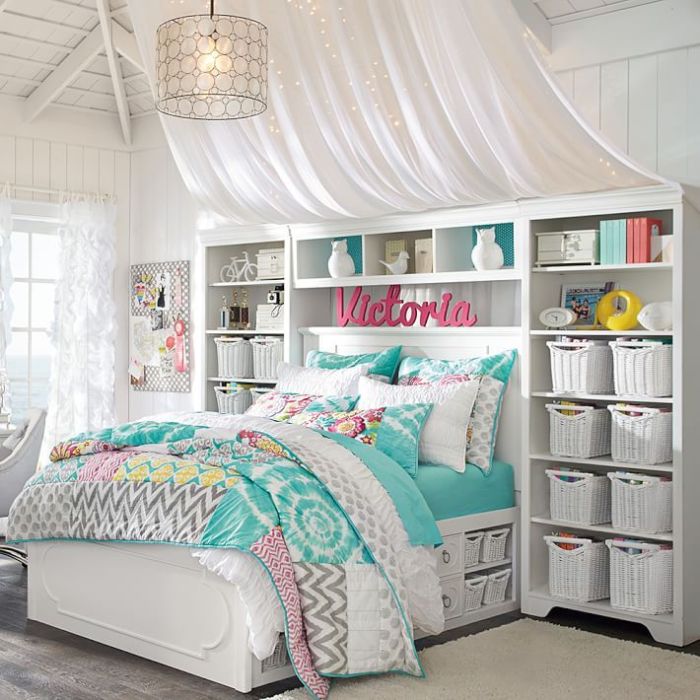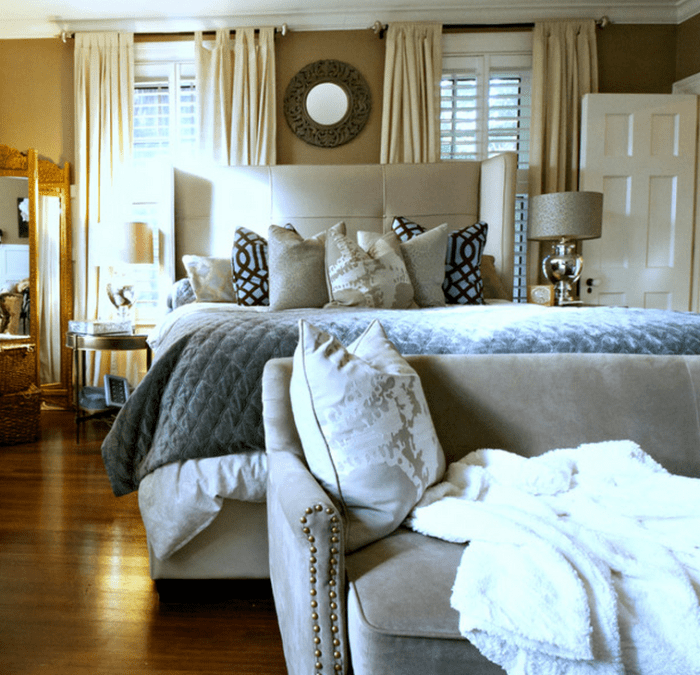The teenage years are a time of great change and growth. As teens develop their own identities and become more independent, they need a space where they can feel comfortable and safe. Their bedrooms are often their sanctuaries, a place where they can relax, study, and socialize.
However, balancing privacy and openness in teen bedroom layouts can be a challenge.
On the one hand, teens need privacy to develop their own sense of self and independence. They need a space where they can be alone with their thoughts and feelings, and where they can feel free to express themselves without judgment.
On the other hand, teens also need openness to socialize with friends and family, and to feel connected to the outside world. They need a space where they can hang out, play games, and just be themselves.
Privacy and Personal Space
For teenagers, their bedrooms serve as a sanctuary, a place where they can retreat, relax, and express their individuality. Privacy is crucial for teens as they navigate the complexities of adolescence, and their bedroom layouts should be designed to enhance this sense of privacy.
Bedroom layouts can be designed to create separate zones for different activities, providing teens with the privacy they need. For example, a desk area can be tucked away in a corner, creating a dedicated space for studying or working on hobbies.
A cozy reading nook with a comfortable chair and good lighting can provide a private retreat for relaxation and escapism.
Potential Risks to Privacy in Open Bedroom Layouts
While open bedroom layouts can promote a sense of spaciousness and togetherness, they can also compromise privacy. Open layouts lack physical barriers, making it easier for others to enter and observe personal belongings and activities. This lack of privacy can be particularly concerning for teens who may feel uncomfortable sharing their space with siblings or other family members.
Openness and Social Interaction
Incorporating openness into teen bedroom layouts can facilitate social interaction and foster a welcoming atmosphere. Openness encourages a sense of community and provides a space where teens can socialize, collaborate, and build relationships.
Design Elements for Openness
To promote openness, consider incorporating design elements such as:
- Large windows or skylights to maximize natural light and create an airy feel.
- Open floor plans with minimal walls or partitions to create a sense of flow and connection.
- Comfortable seating areas with ample space for friends to gather.
- Shared work or study spaces to encourage collaboration and interaction.
Balancing Openness with Privacy
While openness is beneficial for social interaction, it’s crucial to strike a balance with privacy. Consider incorporating elements that allow for both openness and privacy, such as:
- Curtains or blinds to provide privacy when needed.
- Designated “quiet zones” or private nooks for solitary activities.
- Lockable storage or drawers to secure personal belongings.
Decor and Personalization
Decor and personalization are essential aspects of teen bedroom layouts, as they allow teens to express their individuality and create a space that reflects their personality and interests. By incorporating personal touches, such as posters, photographs, and artwork, teens can transform their bedrooms into a sanctuary that is both private and open to their friends.
Impact on Privacy and Openness
While decor and personalization can enhance a teen’s sense of privacy and ownership over their space, they can also impact openness. For example, a bedroom adorned with personal items may make teens feel more comfortable sharing their space with friends and family, while a more private space may encourage teens to keep their belongings and thoughts to themselves.
Safety and Security
Ensuring the safety and security of teens in their bedrooms is paramount. By implementing thoughtful design strategies, parents and teens can create spaces that foster both privacy and a sense of well-being.
Bedroom layouts can incorporate features such as sturdy locks on doors and windows, smoke and carbon monoxide detectors, and emergency lighting. Additionally, parents may consider installing motion-activated cameras or intercom systems to monitor activity and provide peace of mind.
Window Treatments
- Curtains or blinds that can be closed for privacy and to block out excessive light.
- Sheers or translucent fabrics that allow natural light while maintaining privacy.
- Consider blackout curtains to minimize distractions and promote better sleep.
Furniture Placement
- Position the bed away from windows and doors to reduce vulnerability.
- Keep valuables in a secure location, such as a locked drawer or safe.
- Avoid placing heavy furniture near windows or doors to prevent potential hazards.
While safety and security measures are crucial, it’s important to strike a balance with privacy and openness. Teens need spaces where they can feel safe and secure, but also have the freedom to express their individuality and socialize with friends.
Last Word
Balancing privacy and openness in teen bedroom layouts is not always easy, but it is important to create a space that meets the needs of the individual teen. By following the tips in this guide, you can create a bedroom that is both private and open, and that provides a comfortable and stylish space for your teen to grow and thrive.



